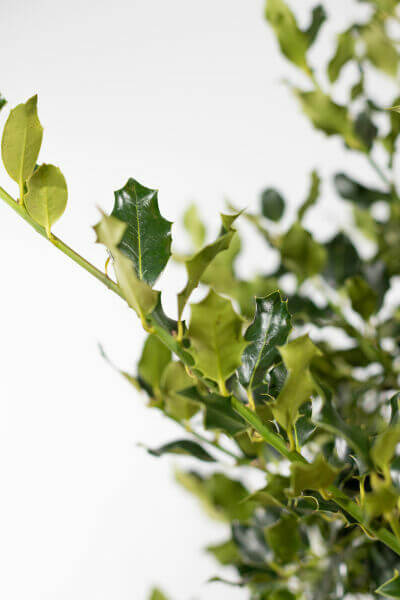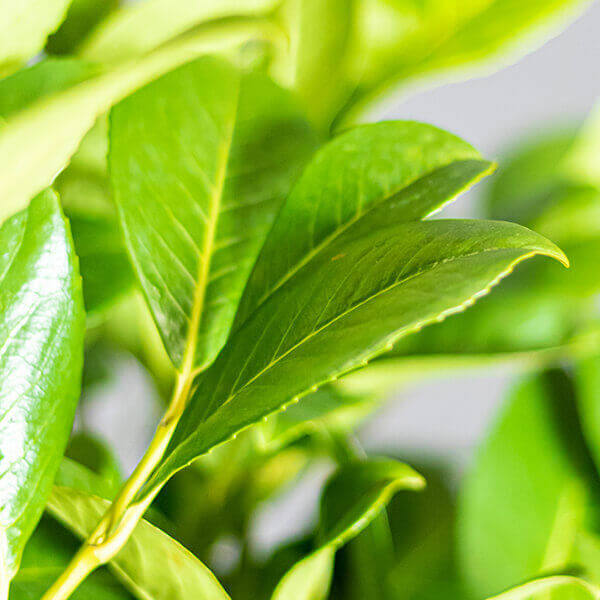Hedge Plants For Year-round Privacy
Hedge Plants For Year-round Privacy
Blog Article
Best Hedging Plants For Industrial Sites
Boost your garden's attraction with lush hedge ranges such as Yew (Taxus), Thuja, Laurel, Photinia, and Bamboo, celebrated for their structural stability and environmental advantages.
Yew and Thuja provide evergreen protection and winter season resilience, while Laurel uses rapid growth and broad, fragrant leaves.
Photinia adds seasonal appeal with its lively red foliage, and Bamboo lends a low-maintenance, serene ambiance.
These hedges enhance air quality, reduce sound, and create tranquil, personal spaces.
Appropriate planting, spacing, and upkeep ensure vigorous growth and eco-friendly harmony.
Explore how these lush ranges can elevate your garden's appeal and wellness.
Secret Takeaways
Change Your Garden With Lush Hedge Ranges
- Select Yew for its thick, evergreen growth and unequaled durability.
- Choose Laurel for its fast development and broad leaves, making sure fast privacy.
- Choose Photinia for its vibrant seasonal foliage, which turns a striking dark red.
- Use Bamboo for a low-maintenance, winter-hardy hedge with visual appeal.
- Area plants 2-3 per meter and prune regularly for optimal growth and health.
Popular Hedge Plants
When transforming a garden with rich hedge varieties, it's vital to think about popular hedge plants such as Yew, Thuja, Laurel, and Photinia due to their distinct qualities and advantages.
Yew (Taxus) is highly esteemed for its longevity and dense, green development, making it a prime option for enduring landscapes.
Thuja is noted for its evergreen foliage and robust winter resilience.
Photinia includes seasonal vibrancy with red leaves that darken gradually, developing vibrant visual appeal.
Laurel uses quick development and aromatic, broad leaves, ideal for quick privacy.
In Addition, Bamboo is an excellent option for atmosphere, providing a low-maintenance, winter-hardy choice that enhances the garden's aesthetic with its classy, swaying walking canes.
These choices cater to a range of horticultural requirements and choices.
Benefits of Garden Hedges
Garden hedges offer a multitude of advantages, making them an important addition to any landscape. These natural barriers are affordable to implement and supply considerable wind protection, enhancing air blood circulation and adding to sound decrease. The dense foliage of hedges like Thuja and Beech makes sure personal privacy by blocking exposure, creating a tranquil and secluded environment.
Hedges likewise play an important role in microclimate guideline, providing a steady environment that promotes plant development and lessens temperature changes. Their intricate leaf structures filter toxins, improving air quality and adding to a much healthier garden community.
Additionally, hedges excel in sound reduction, taking in and deflecting acoustic waves to lower ambient noise levels. This double performance of providing both acoustic and visual privacy improves the total serenity and visual appeal of any garden.
Planting and Upkeep Tips
For a successful hedge, precise preparation of the planting location is essential. Guarantee the soil has correct pH and drainage to support strong root development.
Area the plants properly for the chosen species. Water the hedge often throughout its initial growth phase, changing as required with seasonal modifications.
Carry out a methodical insect control and illness prevention method, utilizing chemical or organic treatments when needed. Frequently check for aphids, termites, and fungal infections.
Apply mulch to keep wetness and suppress weeds. Seasonal pruning promotes dense growth and air flow, necessary for plant health.
Following these standards will help you cultivate a vibrant, well-kept hedge that boosts the beauty of your garden.
Spacing and Trimming Standards
Spacing and Cutting Guidelines
Appropriate spacing and trimming are important for cultivating healthy, aesthetically appealing hedges. Appropriate spacing makes sure each plant gets adequate nutrients, light, and air flow.
Follow these standards for ideal hedge maintenance:
- Spacing: Position hedge plants 2-3 plants per meter to encourage robust growth.
- Pruning Techniques: Regular pruning is essential for maintaining wanted hedge height and shape. Cut brand-new growth in summer and cut down older wood during winter season.
- Seasonal Care: Change cutting approaches and schedules according to seasonal requirements to guarantee plant health.
- Hedge Height: Routinely monitor and cut to preserve the preferred hedge height and attain consistent aesthetic appeals.
Abiding by these actions will ensure your hedge flourishes, enhancing both the appeal and performance of your garden.
Selecting the Right Hedge
Selecting the Right Hedge
Selecting the appropriate hedge involves evaluating elements such as mature height, foliage density, and ecological strength. Effective hedge plant selection requires comprehending each species' development qualities and site-specific adaptability.
For instance, Yew (Taxus) provides excellent durability and dense development, while Thuja is significant for its winter season strength. In addition, thinking about maintenance requirements is vital; fast-growing types like Laurel or Privet demand routine trimming, whereas low-maintenance options like Bamboo or Ivy may be more effective for those looking for minimal maintenance.
Environmental factors such as soil type, light schedule, and moisture conditions ought to also assist the selection process. This mindful technique makes sure the chosen hedges will prosper, providing both aesthetic and practical benefits to the garden landscape.
Delivery and Planting Guidance
To ensure your hedge plants prosper, they must be provided by specialized couriers and planted promptly upon arrival.
Follow these vital actions for effective planting:
- Soil Preparation: Improve the soil with raw material to enhance drainage and nutrient material.
- Planting Depth: Develop a trench two times the width and equal to the depth of the root ball.
- Watering Techniques: Water thoroughly after planting, keeping the soil consistently wet but not filled.
- Mulching: Apply a layer of mulch to maintain wetness and reduce weeds.
Customer Assistance and Service
Given the vital role of prompt help in horticultural pursuits, our customer assistance team is available six days a week through telephone, email, and social media to offer professional suggestions and quickly attend to any concerns. Their devotion to fast reaction times ensures consumer satisfaction by dealing with questions related to plant health, optimal planting methods, and upkeep schedules.

-------------------
Within 24 read more hours
Within 48 hours
Social Media
This comprehensive assistance system, reinforced by an outstanding 9.3/ 10 client score, highlights our commitment to boosting the gardening experience for every single client.
Frequently Asked Concerns
The Length Of Time Does It Take for Hedge Plants to Develop?
Hedge plants normally need one to three years to become completely established, with the precise duration differing by species and growing conditions.
Reliable care during this important duration is essential for robust development. Constant watering, watchful weed control, and suitable fertilizer application are pivotal in promoting strong root advancement.
For instance, fast-growing species like Laurel might establish quicker, while slower-growing ranges such as Yew might take longer. Persistent upkeep accelerates the establishment procedure, resulting in healthy and thick hedges.
What Are the very best Hedge Plants for Personal Privacy?
The question of the very best hedge plants for privacy involves evaluating evergreen and deciduous alternatives.
Evergreen hedges like Thuja, Laurel, and Cypress supply year-round protection, ensuring continuous personal privacy.
In contrast, deciduous hedges such as Beech provide seasonal privacy, shedding leaves in colder months.
Secret upkeep suggestions for privacy hedges consist of regular cutting, fertilizing in spring, and appropriate spacing-- normally 2 to 3 plants per meter.
Additionally, constant watering and persistent weed removal are crucial for promoting healthy, thick growth.
Can Hedge Plants Bring In Wildlife to My Garden?
Yes, hedge plants can draw in wildlife to your garden by offering essential advantages like shelter, food, and nesting sites, therefore improving regional biodiversity. Yew, holly, and laurel are outstanding for attracting birds, while ivy supports a range of insects.
However, it is very important to note that there are some disadvantages, such as increased maintenance to manage bugs and regular maintenance. Thoroughly choosing and keeping hedge varieties can assist stabilize these benefits and disadvantages, ultimately cultivating a sustainable and dynamic ecosystem in your garden.
Exist Any Blooming Hedge Plants Available?
Yes, there are flowering hedge plants available that can improve the appeal of your garden.
For example, Elaeagnus, also called Olive Willow, produces aromatic white flowers in the fall, adding a touch of elegance.
Photinia, another popular option, showcases lively red leaves that grow into a rich green, producing a vibrant visual result throughout the seasons.
To make sure these plants thrive, it's necessary to practice appropriate pruning techniques and seasonal maintenance, such as trimming brand-new development in the summer season and cutting down in the winter season.
These measures will help maintain the health and aesthetic appeal of your flowering hedges.
How Do I Prevent Insects in My Hedge Plants?
To avoid insects in hedge plants, use natural pest control methods and keep proper hedge care. Introduce helpful insects like ladybugs, which take advantage of harmful bugs, to develop a well balanced ecosystem.
Routinely examine your hedges for indications of infestation and immediately get rid of any afflicted parts to prevent the spread. Ensure the health of your hedges by applying well balanced fertilizers and offering appropriate water.
Utilize mulching to retain soil moisture and appropriate spacing to decrease plant stress and promote robust growth. These practices collectively assist in lessening bug concerns and maintaining a healthy hedge.
Conclusion
In essence, choosing the right hedge varieties such as Yew, Thuja, and Laurel can transform any garden into a tranquil sanctuary. These plants supply year-round plant, boost visual appeal, and offer practical benefits like sound decrease and wind security.
Appropriate planting methods, accurate spacing, consistent watering, and seasonal cutting are essential for ideal growth.
Reputable delivery services and expert consumer assistance guarantee a seamless experience from purchase to planting, making it easier than ever to raise your outdoor area.
Garden hedges provide a plethora of advantages, making them a valuable addition to any landscape. These natural barriers are affordable to implement and supply considerable wind protection, boosting air flow and contributing to noise decrease. The dense foliage of hedges like Thuja and Beech guarantees privacy by blocking visibility, developing a secluded and tranquil environment.

Pruning Techniques: Regular pruning is important for maintaining wanted hedge height and shape. Cut brand-new growth in summertime and cut back older wood during winter.
Report this page